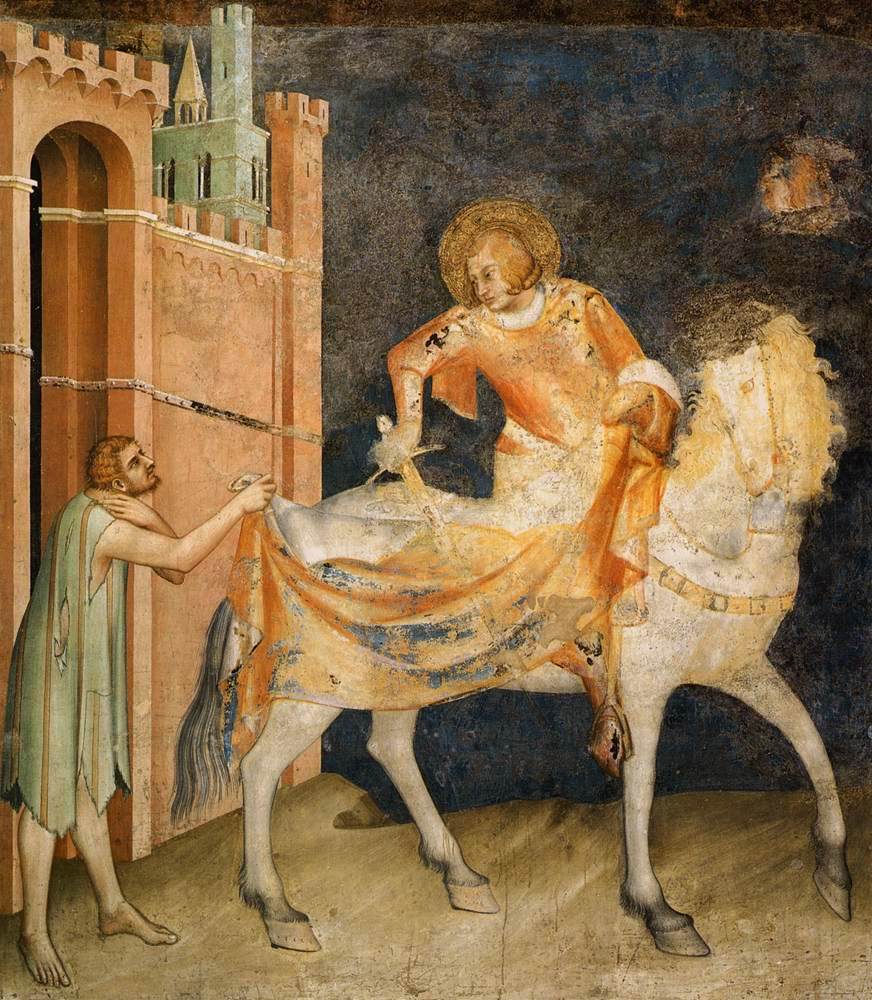In hopes of Saint Nicholas?
Not exactly. It’s not early, as you might think, as Saint Nicholas is celebrated on the 6th of December. But then again, children here are not waiting up for him either. In the region of Klerken, the good saint has already come along, as we celebrate Saint Martin.
The good man is getting a bit on with age, and can’t reasonably be expected to sever the entire world in one day. Along with many assistants, and other well-meaning helpers, there are other saints and figures who help deliver presents at the end of the year. And so…
But who are these saints, and why are they giving presents to children?

Saint Martin
Or Saint Martinus of Tours. He was born at the beginning of the fourth century, about 316 AD, and died on the 8th of November 397. His name day is celebrated on the 11th of November, when he was first buried.
He was born in Hungary, from Roman parents. He grew up in Ticinum, which is now Pavia in Italy. His father would have liked young Martinus to follow in his footsteps, and enter into a career in the Roman army.
Martin, on the other hand, did not like the idea. His God was one of peace. However, at the age of 15, he was obliged to join the imperial guard. This brought him to Gaul, now France. And this is where everything really starts.
Martinus in action
He was well liked by his fellow soldiers. Wherever he could lend a hand, he did, and what he could give to help another, he gladly gave. This brings us to the story most people know of Saint Martin.
One cold evening, he found himself at the Amiens city gate, where he saw a poor, unclothed beggar. Everyone passed him by without even a second glance. Martin himself had nothing left of his own to give, except half of his own cloak – the other half, the story goes, belonged to the army. So he took his sword, and cut half of his cloak to give to the beggar.

That very night, Jesus appeared to him, clothed in his half cloak. “Verily I say unto you, Inasmuch as ye have done it unto one of the least of these my brethren, ye have done it unto me.” (Matt. 25:40) Martin, now 20 years old, went to get baptised as soon as possible.
Nice to know: this cloak was preserved as a relic. In Latin, it is called capella. The part of the church where it was on display? Exactly, it is now called a chapel. After the cloak of Saint Martin.
Some time later, Tours needed a new bishop. Who better than Martin? He was known everywhere to be simple, but wise and persuasive man. Simple and humble, to be sure. So humble, in fact, that, in order to forego the honour they wanted to bestow on him, he even hid in a goose pen. Or so it is told. Another version says that everyone, for miles around, came to line the road from his monastery to the cathedral, to take him to Tours.
What next?
There are many mores stories. What is striking, is how they keep showing Martin as a humble and persuasive man. If you want to read more, take theVita Sancti Martini of Sulpicius Severus. Sulpicius was an admirer, who claims to have met Saint Martin himself. An English translation is available online.